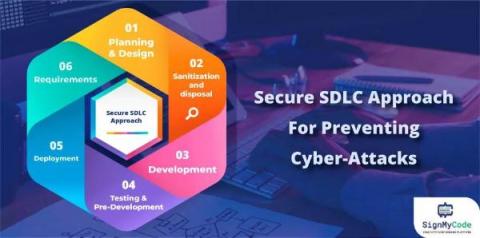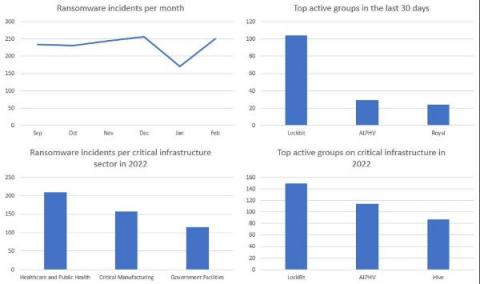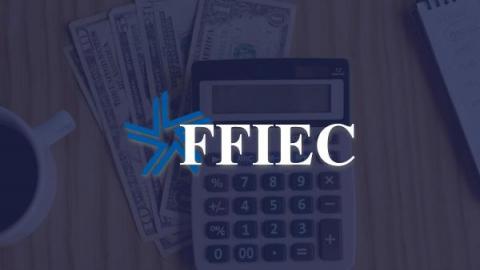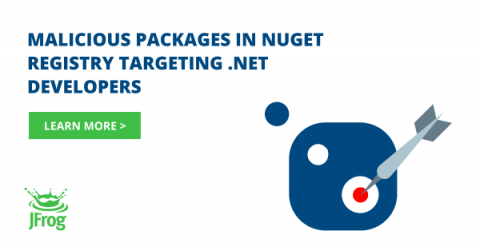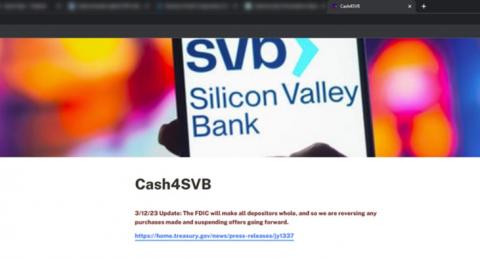Security | Threat Detection | Cyberattacks | DevSecOps | Compliance
Cyberattacks
Europe's transport sector terrorised by ransomware, data theft, and denial-of-service attacks
A new report from ENISA, the European Union Agency for Cybersecurity, looking at cyberattacks targeting the European transport network over a period of almost two years, has identified that ransomware has become the prominent threat. ENISA's report, its first ever analysis of the myriad of cybersecurity threats facing the transport sector in the EU, mapped and studied cyber incidents targeting aviation, maritime, railway, and road transport between January 2021 and October 2022.
Practical advice to secure your expanding attack surface
The other week, BitSight published research identifying thousands of organizations using internet-facing and exposed webcams with many video and audio feeds susceptible to spying. The potential consequences are serious – an attacker could potentially view private activities and eavesdrop on sensitive conversations, presenting a variety of privacy and security concerns. Below are some of the screenshots BitSight captured from exposed devices (blurred for privacy).
Secure SDLC Approach For Preventing Cyber-Attacks
According to CrowdStrike Report, a 50% increase has been analyzed in active intrusions and cyber-attacks in 2022. And the number may increase in 2023 too. With more and more applications becoming a target of hackers, it getting complex for developers to identify relevant security approaches. Development teams are somewhere unable to select the best mechanism, which would be compatible, high-performing, and strong enough to prevent attacks.
Detect the Most Common Ransomware TTPs to Prevent Attacks
In our new threat briefing, Forescout’s Vedere Labs details tactics, techniques and procedures (TTPs) commonly adopted by ransomware groups and provides specific mitigation recommendations. In addition to basic cyber hygiene practices, we recommend using Forescout XDR for extended detection and response. Its 1,500+ detection rules cover hundreds of the TTPs most commonly used by ransomware.
How To Prevent a CSRF Attack
Cross-site request forgery (CSRF) attacks are a form of cyberattack from malicious websites, emails, blogs, instant messages, or applications. This type of attack tricks the user's web browser into executing an unwanted action on a secure website. Browsers typically attach session cookies when making a request to a website. Thus, it becomes difficult for the site to differentiate between legitimate requests that are authorized and forged requests that have been authenticated.
Financial Services Firms: Address FFIEC's Stringent API Security Regulations with Noname Security
Financial services companies are a favorite target for threat actors. Most of us are familiar with the Equifax and Capital One breaches that exposed hundreds of millions of customer records. But there are other attacks that don’t make the headlines. Over the years, the Carnegie Endowment’s FinCyber project has documented hundreds of separate cyber incidents impacting financial institutions around the world.
Attackers are starting to target .NET developers with malicious-code NuGet packages
Malicious packages are often spread by the open source NPM and PyPI package repositories, with few other repositories affected. Specifically – there was no public evidence of severe malicious activity in the NuGet repository other than spam packages used for spreading phishing links. As with other repositories, the JFrog Security Research team regularly monitors the NuGet repository for malicious packages, including manual analysis of suspicious code.





